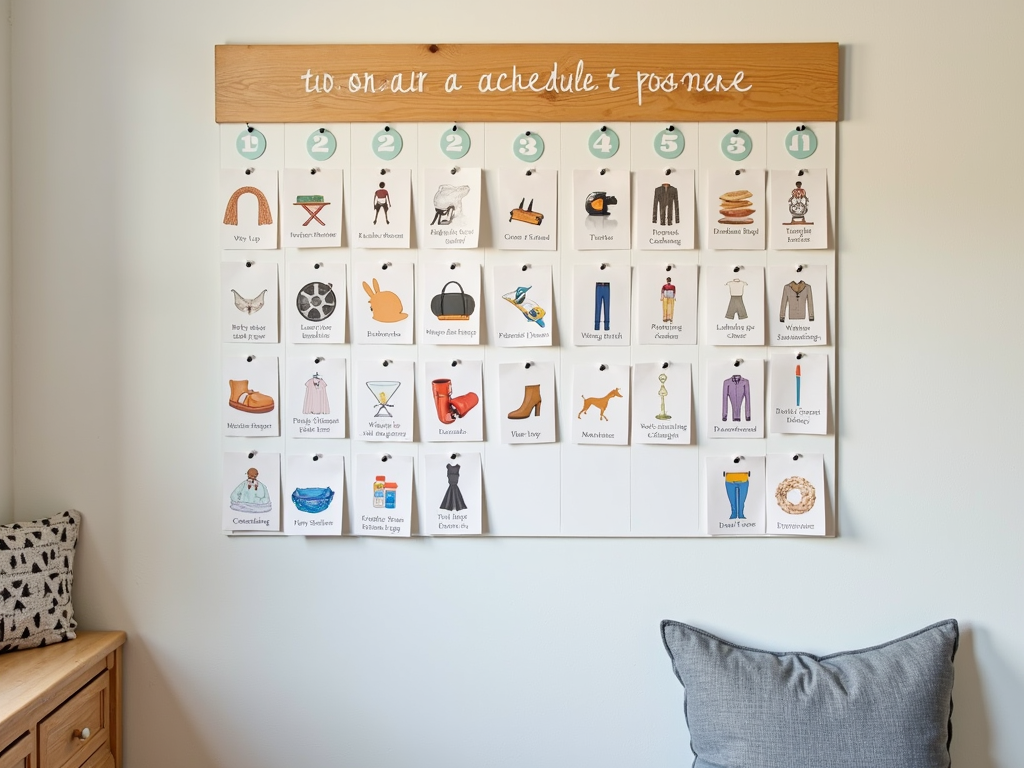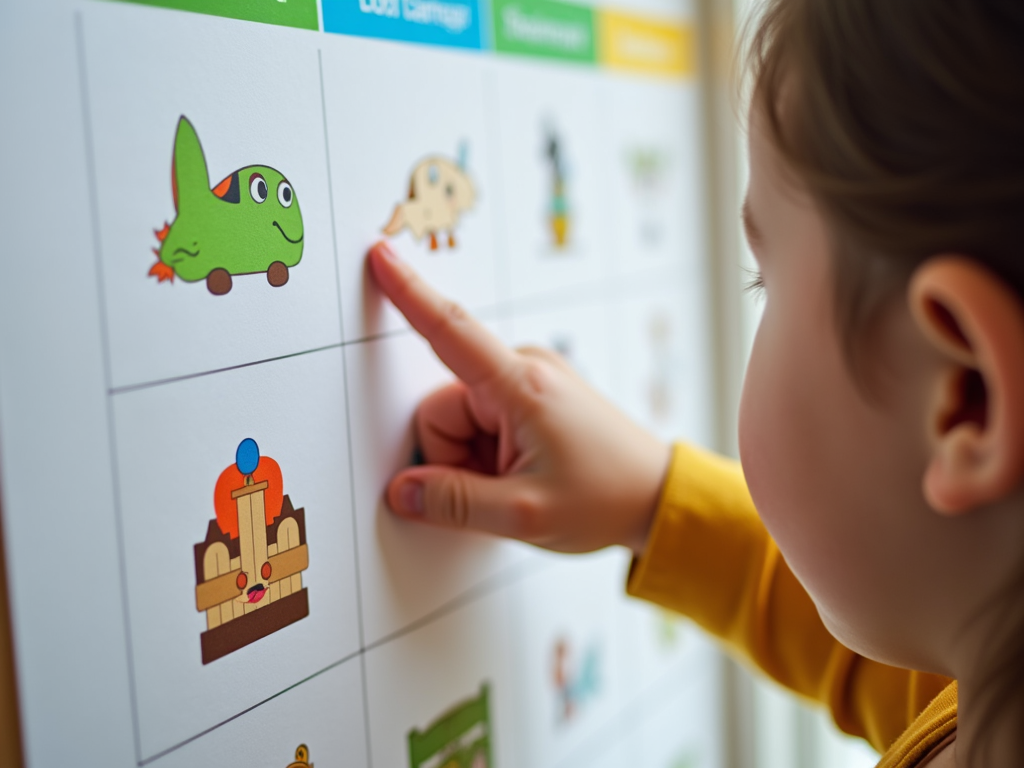Visual schedules are visual representations of tasks or activities in a sequence. They can help families manage daily routines, reduce anxiety, and support behavioral therapy. This guide will provide a comprehensive understanding of visual schedules and how to implement them effectively.
Visual schedules are tools that use images, symbols, or words to represent tasks or activities in a sequence. They can be used in various settings, including home, school, and therapy sessions. For example, a morning routine schedule might include images of waking up, brushing teeth, getting dressed, and eating breakfast. Visual schedules are not just for children with autism; they can benefit any child who thrives on routine and structure.
Visual schedules offer numerous benefits for families:
- Reduce Anxiety: By providing a clear understanding of what will happen next, visual schedules can reduce anxiety and uncertainty.
- Improve Independence: Children can follow the schedule independently, fostering a sense of autonomy.
- Enhance Communication: Visual schedules can serve as a communication tool, helping children express their needs and preferences.
- Support Behavioral Therapy: In the context of Applied Behavior Analysis (ABA) or behavioral therapy, visual schedules can reinforce positive behaviors and routines.
Additionally, visual schedules can help with time management by breaking down tasks into manageable steps. For example, a visual schedule for homework might include steps like gathering materials, completing assignments, and checking work.
Creating a visual schedule involves a few simple steps:
- Identify Tasks or Activities: Determine what tasks or activities you want to include in the schedule.
- Choose Images or Symbols: Select images or symbols that represent each task or activity. These can be photographs, drawings, or icons. Consider your child's preferences and understanding.
- Arrange in Sequence: Arrange the images or symbols in the order that the tasks or activities will occur.
- Display the Schedule: Display the schedule in a place where it is easily accessible, such as on a wall or in a binder.
Families can use physical materials like paper and Velcro or digital tools like apps to create visual schedules. When choosing the format, consider what works best for your family. Some prefer a vertical schedule, while others prefer a horizontal one.
Here are some tips for implementing visual schedules effectively:
- Start Small: Begin with a simple schedule and gradually add more tasks or activities.
- Involve the Child: Involve your child in creating the schedule to increase their engagement and understanding.
- Be Consistent: Use the schedule consistently to establish routines and expectations.
- Use Positive Reinforcement: Encourage your child to use the schedule by providing positive reinforcement, such as praise or rewards.
- Be Flexible: Adjust the schedule as needed. If a particular task or activity is causing stress, consider modifying the schedule or providing additional support.
- Celebrate Successes: Acknowledge and celebrate your child's progress, no matter how small.
Many families have found visual schedules to be incredibly helpful. For example, one parent shared how a visual schedule helped their child with ADHD stay on task during homework time. By breaking down the homework process into smaller steps, the child was able to focus and complete assignments more efficiently.
Another family used a visual schedule to support their child's ABA therapy sessions. The schedule outlined the different activities in the session, helping the child stay focused and engaged. The parent noted that the visual schedule made the therapy sessions more predictable and less overwhelming for their child.
In the context of family therapy, visual schedules can be a valuable tool for improving communication and reducing stress. One family shared how creating a visual schedule together helped them understand each other's needs and preferences better, leading to a more harmonious home environment.
Visual schedules are a versatile tool that can be adapted to meet the needs of any family. Whether you're managing daily routines, supporting behavioral therapy, or simply looking for a way to improve communication, visual schedules can help. Remember to start small, be consistent, and involve your child in the process. With time and practice, you'll find that visual schedules become an invaluable part of your family's routine.



Discuss Here